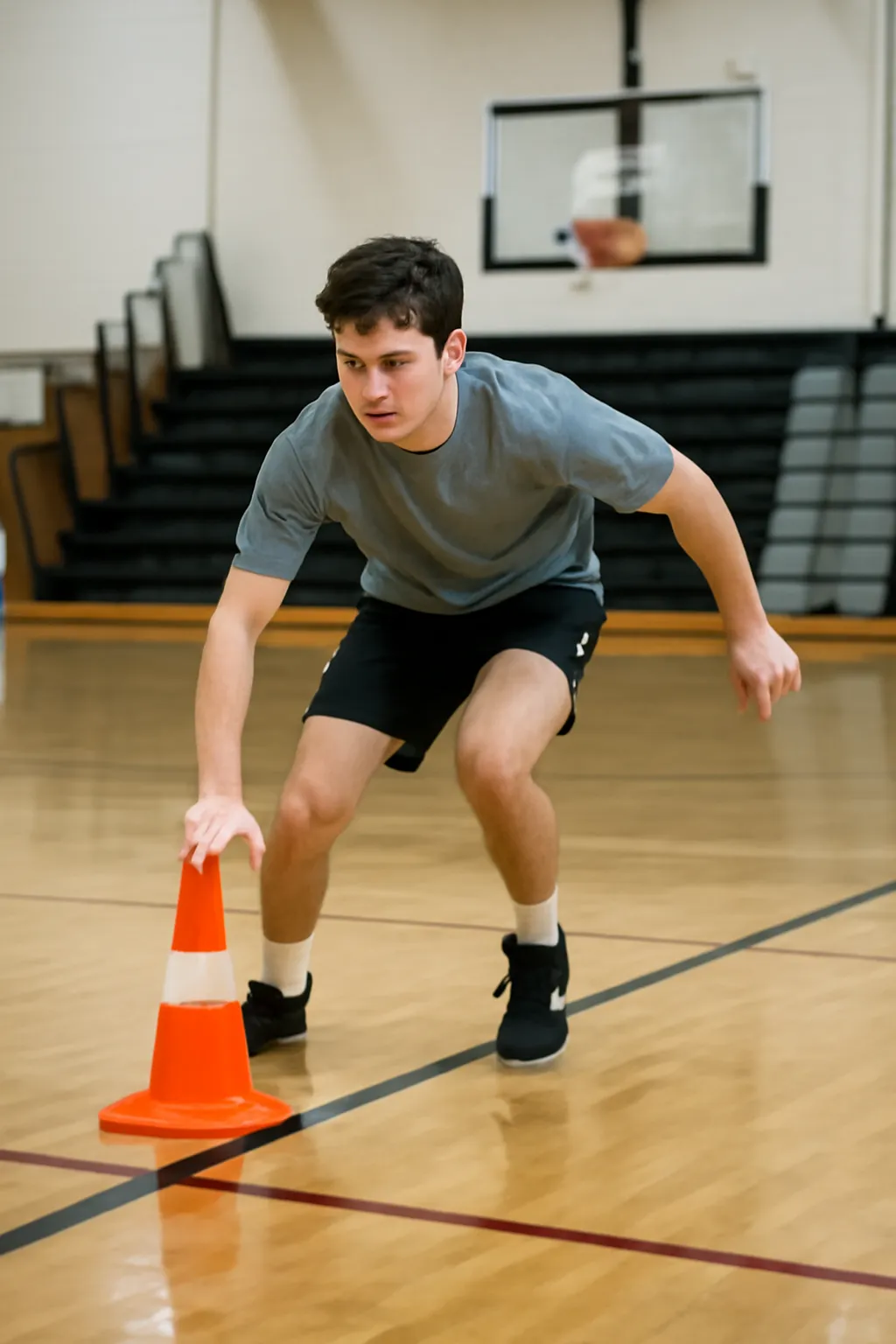How does the shuttle run challenge high school students? Discover average times, the benefits of the shuttle run, and tips to improve performance.
The shuttle run, commonly featured in high school fitness tests, assesses not only a student’s speed but also agility, endurance, and overall athleticism. This test involves sprinting back and forth between two points placed 10 to 20 meters apart, with students aiming to complete the run in the shortest possible time. For many high school athletes, the shuttle run is a staple in both physical education classes and competitive sports training. But what is the average performance for high school students, and how can they improve their results? Let’s take a deeper look.
High School Student Shuttle Run: What Is the Standard?
The shuttle run test is typically performed in a gymnasium or an open indoor area. Students are asked to run to a designated cone, touch it, return to the starting point, and repeat the process for a set amount of time or until they reach the finish line. The average time for a high school student’s shuttle run can vary depending on factors like age, gender, and fitness level, but most high school students can complete the test in about 12 to 15 seconds for a 10-meter shuttle.
For students aiming to achieve higher scores, it’s important to understand how these times compare to other benchmarks:
-
Boys: The average time for high school boys typically falls between 12.5 to 14.5 seconds for a 10-meter shuttle run.
-
Girls: High school girls generally complete the test between 14 to 16 seconds for the same distance.
While these times are averages, many factors can influence performance, such as overall physical conditioning, reaction time, and practice.
Why Is the Shuttle Run So Important?
The shuttle run isn’t just a test of speed; it also evaluates agility and endurance, making it an essential part of a high school student’s physical development. By pushing students to sprint short distances repeatedly, the shuttle run helps develop fast-twitch muscle fibers, which are responsible for quick bursts of energy. This is crucial in nearly all sports, where agility and quick directional changes are often needed.
For example, consider how a soccer player might benefit from shuttle run training. The ability to sprint quickly, stop on a dime, and change directions sharply can make the difference between winning or losing a match. Similarly, basketball players, football players, and track athletes all benefit from improved shuttle run times, as it directly correlates to their ability to perform in their respective sports.
Beyond athletic benefits, the shuttle run also plays a significant role in a student’s overall physical fitness. For many, it’s an opportunity to assess cardiovascular fitness and the effectiveness of their training programs. High school physical education teachers and coaches can use shuttle run results to tailor training regimens that improve endurance, strength, and speed over time.
👉 Learn More About Shuttle Run Training 👈
How to Improve Shuttle Run Times
Improving your shuttle run performance requires a combination of speed training, agility drills, and overall fitness improvements. Here are some targeted strategies to boost performance:
1. Focus on Explosive Speed
Short bursts of speed are crucial for the shuttle run. Training with sprints or interval training can help increase speed and explosive power. A simple drill would involve sprinting as fast as possible for 20-30 seconds, followed by a brief rest.
2. Strengthen Your Core
Core strength is fundamental for maintaining stability and control during rapid direction changes. Core exercises such as planks, Russian twists, and leg raises can enhance your ability to stay balanced, even when performing sharp turns.
3. Work on Agility
Agility drills, such as ladder drills, cone drills, and zig-zag sprints, mimic the movement patterns involved in a shuttle run. Incorporating these drills into your weekly routine will increase your ability to shift directions quickly, reducing the time it takes to complete the shuttle run.
4. Optimize Your Form
The proper running form can make a huge difference in your shuttle run time. Focus on quick, efficient strides, with minimal wasted energy. Keep your body low to the ground to maximize your acceleration and maintain speed.
5. Practice the Shuttle Run
While cross-training and agility drills are important, nothing beats the specificity of practicing the shuttle run itself. Consistent repetition will help you get comfortable with the test, improving both your speed and reaction time.
Improving shuttle run times is a gradual process. With consistent training, high school students can shave seconds off their times, leading to better results and enhanced athleticism.
👉 Click Here for More Tips on Improving Shuttle Run Times 👈
Conclusion
The shuttle run is more than just a test of speed—it’s an assessment of a student’s agility, endurance, and athletic potential. Understanding the average times and focusing on strategies to improve performance will help students not only pass the test but excel at it. Whether it’s for a fitness evaluation or for athletic training, the shuttle run is an important tool in assessing and enhancing a student’s physical capabilities. By training smart, practicing consistently, and staying focused on improvement, high school students can achieve their best shuttle run times and become better athletes overall.
“Success is the sum of small efforts, repeated day in and day out.” – Robert Collier






